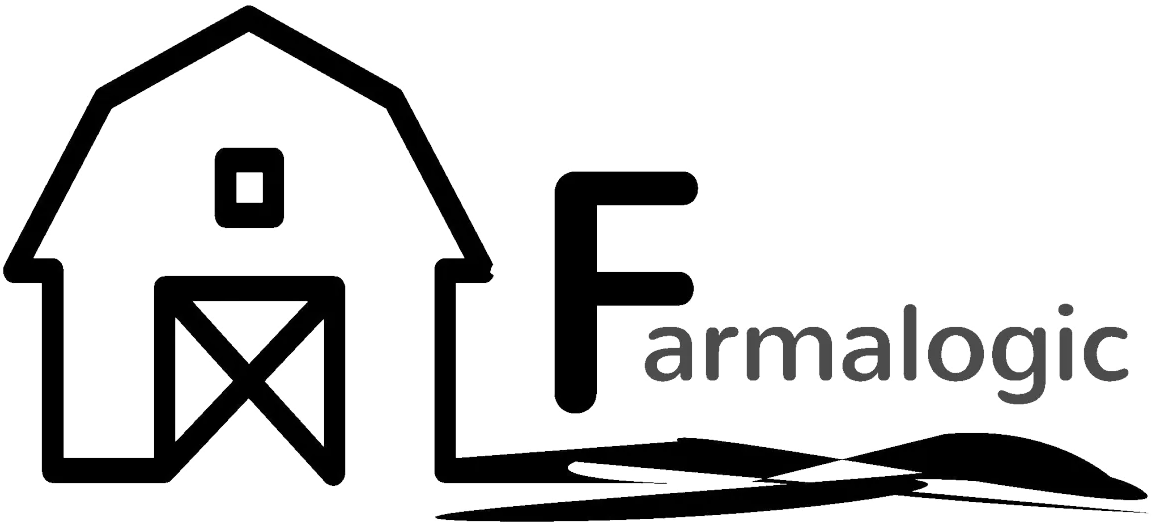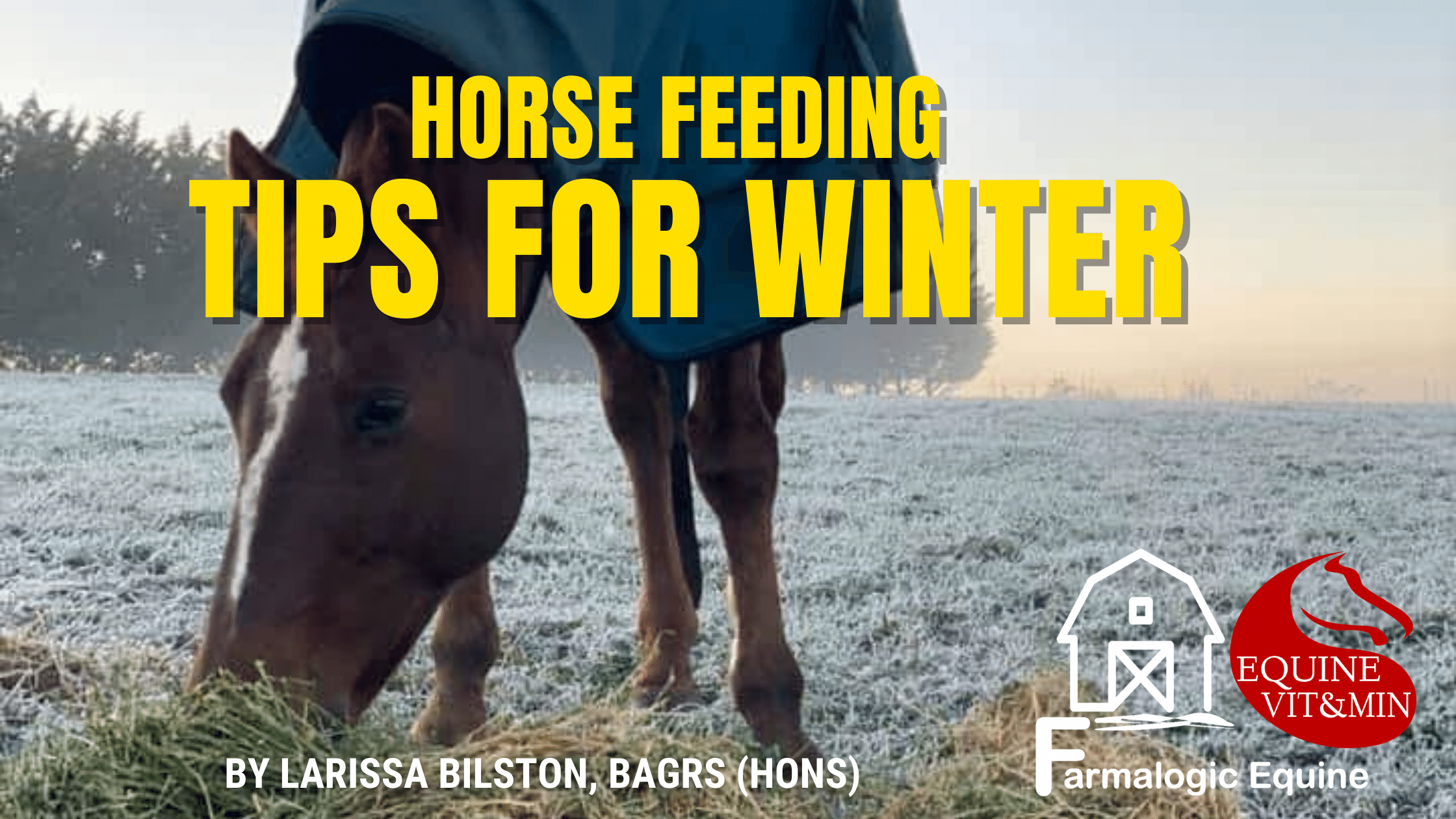Should you make changes to your horse feeding program during cold months? Sometimes it only takes a small feeding or horse husbandry change to provide significant health benefits to horses over winter. In this article, equine nutritionist, Larissa Bilston (BAgrSc), investigates some common winter feeding practices and offers tips to boost your horse’s winter health.
Avoid Respiratory Problems
- Avoid feeding dusty feeds and mouldy hay as these can exacerbate respiratory problems and cause digestive and toxicity issues.
- Wherever possible provide feed at ground level so that the horse can eat with a natural posture (they were designed to graze from the ground) which allows the respiratory tract to clear out.
- Steaming or soaking hay for a few minutes can be useful for minimising dust but only feed out as much as the horse will eat in a few hours to avoid mycotoxin contamination from mould growth.
- Horses diagnosed with respiratory diseases such as COPD or RAO will benefit from supplementation with antioxidants including selenium and vitamins C and E at levels higher than found in feeds and multivitamin supplements such as those provided by Farmalogic Melox.
Horse Feeding to Manage Diarrhea
Accute (sudden, severe) diarrhea can be caused by feeding too much grain, sudden changes in diet, stress, use of painkillers and bacterial or fungal toxins in mouldy hay, lush pasture, old or poorly stored grain.
Chronic (ongoing) diarrhea can be caused by sand in the digestive tract, intestinal worms or starch overload. If your vet is unable to diagnose the cause, try some or all of the following:
- feed on a mat to limit sand/dirt intake;
- feed plenty of long stem roughage (one of the best ways to assist with removal of sand build up in the gut);
- feed salt (10 grams per 100 kilograms horse bodyweight) to encourage drinking;
- give an electrolyte supplement to replace lost electrolytes;
- implement a deworming program as advised by your vet;
- reduce starch (e.g. by removing feeds containing cereal grains or by-products) and increase dietary fibre;
- Use probiotics and prebiotics (look for live yeast as well as deactivated prebiotic ingredients such as Farmalogic Rejuvenate);
- provide B group vitamins, including a high dose of B1 (thiamin) – Farmalogic B-Good Paste and Farmalogic Mega-B Boosta paste are two convenient blends of probiotic live yeast, prebiotics and B-group vitamins;
- use a toxin binder containing multiple ingredients to trap, bind or deactivate the broadest possible range of mycotoxins. Look for ingredients including yeast cell walls, aluminosilicates, enzymes and botanicals such as those provided by Farmalogic Grazaid.
- try a different batch of hay; and
- remember to make all feed changes gradually over a 2 to 3 week period.
Keep them Drinking
Some horses don’t drink enough water during colder weather, which isn’t good for their health. You can encourage drinking by:
- always providing fresh clean water that is not too hot or too cold.
- keeping water under cover can help keep it clean (especially if bat or bird droppings are likely to contaminate it) and manage temperature fluctuations.
- emptying and cleaning the water trough every few days to avoid algae, bird droppings, dead insects and the like building up in the water.
- feed approximately 10 grams of salt per 100 kilograms of horse bodyweight to encourage healthy levels of water intake. Remember to include the salt content of pre-mixed hard feeds when calculating how much to add.
A nice warm bran mash?
As humans we love the smell of a nice warm bran mash on a cool night but we’re not doing our horses any favours by suddenly introducing a new feed like bran for the occasional meal because the hindgut microbes can’t adapt for a once-a-week feed.
Make dietary changes very gradually (take 2 – 3 weeks to introduce a new feed) and a few days to introduce a new supplement. In addition, bran has an inverted calcium to phosphorous ratio so if you do choose to feed it, make it part of a daily ration with added calcium to balance the mineral ratios correctly (aiming for a total daily intake of calcium that is twice the level of phosphorous).
A nice warm stable?
Stabling and confinement can cause low level stress and increase the risk of ulcers, enteroliths and colic. Horses need frequent movement to be relaxed and for their gut to function properly. If you need to stable, ensure your horse never has an empty haynet. If you are stabling to keep a horse under lights for a show coat, consider an extra rug and letting him out of the stable when you turn the lights out.
Roughage for Mental and Physical Health
Many horses do not get enough roughage in their diets. This is particularly true for horses kept in stables and small yards as well as during winter if your pasture growth becomes very slow.
Horses need to have access to hay, chaff or grass approximately more than 20 hours every day (although they won’t eat constantly 24/7). When they go without food for more than 3 or 4 hours, horses become very stressed and unsettled leading to behavioural problems, ulcers, colic and bolting feed which can cause choke.
Most horses need to eat a total of 2% of their bodyweight in dry matter. Dry matter is the weight of a feed after all moisture is removed. Fresh grass is low in dry matter and high in water (15 – 30% dry matter; 70 – 85% water) compared to hay (85% dry matter) and grain or pellets which are high in dry matter (90%) and low in water (10%). A 500 kg horse needs 10 kg of dry matter from food. This can mean as much as half to two thirds of a bale of grass or meadow hay every day or free access to a large bale of hay when pasture is poor or not available.
Click here to read more on calculating how much food your horse needs.
Feeding Concentrates to Prevent Weight Loss
Although many mature easy-keeper horses and ponies at rest or in light work hold body condition easily from hay and grass alone, others need more calories over-winter to prevent unwanted loss of weight. A hard feed of grains and/or superfibres is often necessary for ageing horses, thoroughbred types and those in harder work.
Keeping warm in cold weather burns body fat, so appropriate use of rugs, wind breaks, shelters and stables helps less thrifty breeds hold condition over winter.
Read this article for tips on feeding for weight gain.
Boosting Immunity with Omega-3 and Antioxidants
Omega-3 oils help to prevent the formation of damaging free radicals in the body and stabilize the immune system. Including omega-3 supplements in the feed can improve general health as well as improving joint and skin health, hoof quality and coat shine.
Omega-3 rich sources suitable for horses include green grass, algal meal, linseeds, chia seeds and fish oils. The recommended feeding rate is 30 g of whole or freshly ground linseeds, 15 ml of stabilized linseed oil or 2 ml of fish oil per 100 kg of bodyweight. Chia seeds are lower in omega-3 and need to be fed at about 30% higher than linseeds. Marine-derived omega-3 sources (algal and fish oils) can be more economical to feed because they have the advantage of providing the most active forms of omega-3: DHA and EPA.
Omega-3 supplementation is particularly important when hay and grains form the majority of the diet, and access to omega-3 rich fresh grass is limited. Consider Farmalogic Omega Balancer (with ALA, DHA and EPA forms of omega-3) or Equine Vit&Min Omega-3 PLUS for a stable source of omega-3 without the need for refrigeration.
During cold weather, additional antioxidants can boost immune function.
- Even the freshest green grass leaves horses deficient in vitamin E and the levels in many feeds and multi-vitamin supplements are too low to top up the diet. When choosing a vitamin supplement, look for one like Equine Vit&Min with high levels of vitamin E or use an antioxidant booster to top up vitamin E levels.
- Horses produce maintenance levels of vitamin C for much of their lives but sick or stressed horses and those over 16 years of age require more than the body can make. Introduce supplementary vitamin C gradually and wean the horse off it slowly when the extra dietary source is no longer required.
- Many Australian soils are selenium deficient, so this mineral is often added to horse feeds. Additional selenium can be added to boost antioxidant levels when required. Be careful not to double dose on selenium through different feed sources as this is one mineral where toxicity levels are relatively low. Look for organic sources such as selenium yeast in antioxidant supplements. Farmalogic Melox contains scientifically balanced levels of natural-sourced vitamin E with high availability, vitamin C, pure organic selenium (which is significantly more bioavailable than selenite) and plant-derived superoxide dismutase (SOD), a powerful naturally occurring antioxidant enzyme.
A note of caution regarding garlic
Although garlic is often promoted as being beneficial for horses, it contains allicin which is good for people but a known toxin to horses. Garlic’s antimicrobial action harms the beneficial microbes in the hindgut. Feeding garlic long term can cause Heinz body anaemia leading to lowered endurance, energy level and immune function in horses.
Nutraceuticals for Joint Care
Horses with osteoarthritis often ‘feel their bones’ and suffer more pain during the cold of winter. Whilst feeding cannot cure degenerative joint problems, adequate vitamin and mineral supplementation also supports your horse’s joint health. Vitamins B6, C and E and the minerals manganese, copper and zinc are required to help the body build, maintain and repair joint fluids, connective tissues, muscles and bones.
Orally ingested hyaluronic acid (HA), MSM, glucosamine and DHA omega-3s are recorded to have anti-inflammatory &/or analgaesic (pain relieving) affects in humans, dogs and horses. For mild cases, oral joint supplements such as Farmalogic ReFLEX may offer enough relief, or they can be used in addition to veterinary oral or injectable treatments.

Save 5% on Farmalogic Equine supplements when you buy a winter health bundle. Only from Farmalogic Online!



